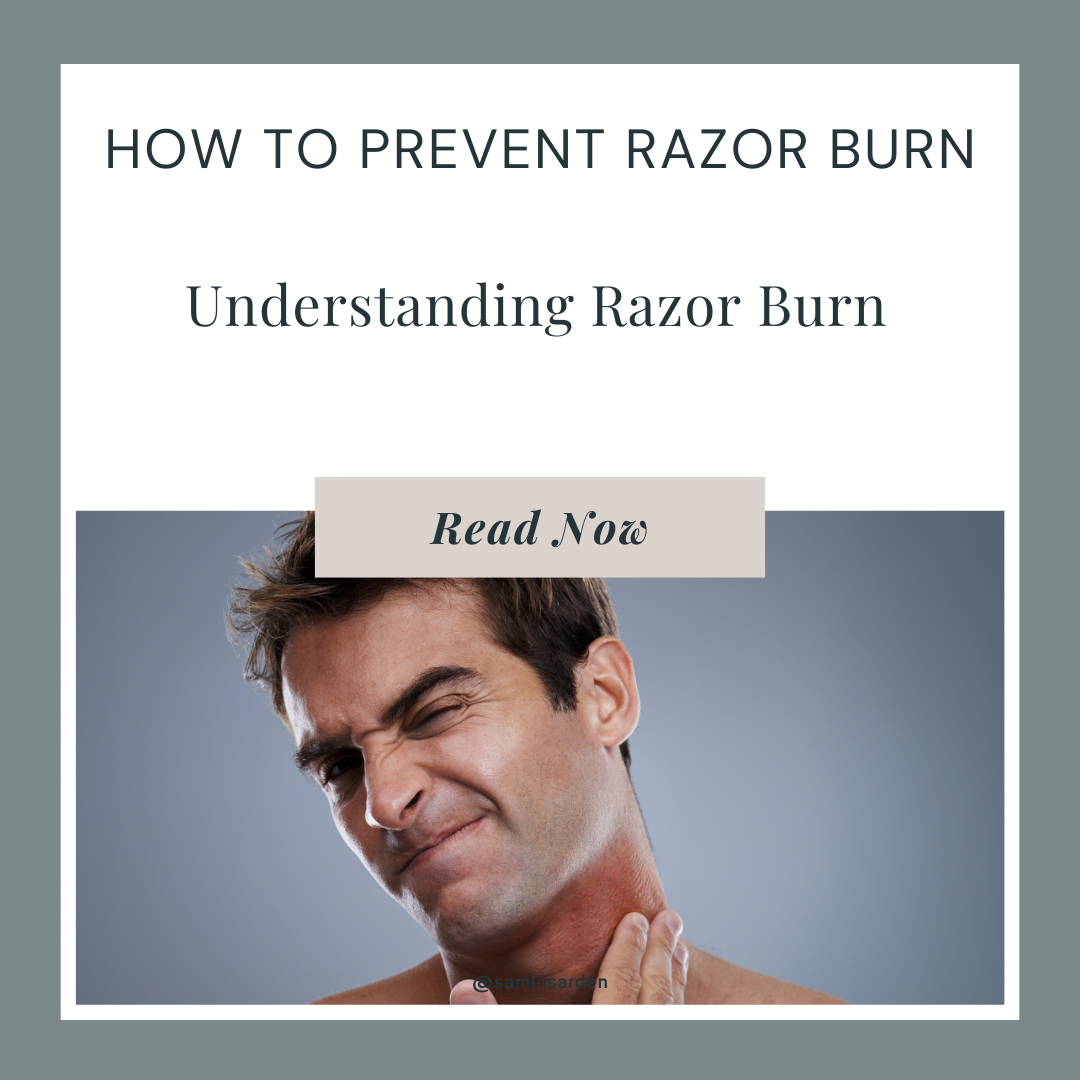Table of Contents
Razor burn is a common but frustrating issue many people face after shaving. This uncomfortable condition can leave your skin red, inflamed, and itchy. Luckily, there are proven methods to prevent razor burn and keep your skin smooth and irritation-free. In this guide, we will explore the best practices on how to prevent razor burn, and by following these tips, you can transform your shaving routine into a soothing experience.
Understanding Razor Burn
Before diving into prevention tips, it’s essential to understand what razor burn is. Razor burn occurs when the skin becomes irritated after shaving, often due to friction from the razor, improper shaving technique, or sensitive skin. It typically results in redness, bumps, or a burning sensation that can last for several hours or even days.
Learning how to prevent razor burn can save you from these unpleasant effects and improve your overall shaving experience. Whether you’re a seasoned shaver or a beginner, these tips will help you achieve smoother results without irritation.
1. Prepare Your Skin Properly
One of the most crucial steps in how to prevent razor burn is proper skin preparation. Shaving dry or unprepared skin is a major cause of irritation. Start by washing the area you plan to shave with warm water and a mild cleanser. This helps remove dirt, oil, and dead skin cells, which could clog your razor and contribute to razor burn.
Additionally, the warm water softens your hair, making it easier for the razor to glide over your skin without pulling or tugging, which reduces the likelihood of irritation.
2. Exfoliate Before Shaving
Exfoliating before shaving is an often-overlooked step in preventing razor burn. By exfoliating, you remove dead skin cells that can trap hair and cause ingrown hairs, which are a common side effect of razor burn.
Use a gentle scrub or a soft-bristle brush to exfoliate the skin a few minutes before shaving. This ensures that the razor has a smooth surface to glide across, reducing friction and, in turn, irritation. Remember, learning how to prevent razor burn is all about making your skin as prepared as possible.
3. Use a Sharp Razor
One of the simplest yet most effective tips on how to prevent razor burn is to always use a sharp, clean razor. Dull blades require more pressure and often result in multiple passes over the same area, increasing friction and the chance of irritation. A sharp razor will cut through hair cleanly in one pass, minimizing skin contact and the risk of razor burn.
Make it a habit to replace your razor blades regularly. If you notice tugging, discomfort, or that the razor is not shaving as smoothly, it’s time to swap out the blade. Keeping your razor sharp is a key element in preventing irritation.
Our razors of the highest quality provide you with the sharpest and smoothest razors you’ve ever witnessed.
4. Shave your Hair in the Direction they grow
Shaving against the grain might give you a closer shave, but it also increases the risk of razor burn and ingrown hairs. When learning how to prevent razor burn, always shave in the direction of hair growth. This technique causes less stress on the skin and reduces the likelihood of irritation.
If you’re unsure about the direction of your hair growth, let your hair grow out a bit so you can see the pattern, then follow it while shaving.
5. Use Shaving Cream or Gel
Another vital tip in understanding how to prevent razor burn is using the right shaving cream or gel. Shaving dry skin can cause significant irritation, and water alone isn’t enough to protect your skin from the razor. Use a quality shaving cream or gel that is formulated to hydrate and create a barrier between the razor and your skin.
Look for products that are free of alcohol and harsh chemicals, as these ingredients can dry out your skin and contribute to razor burn. Applying a generous amount of shaving cream helps the razor glide smoothly and prevents friction.
6. Don’t Apply Too Much Pressure
Many people press too hard with their razor, thinking it will give them a closer shave. However, applying too much pressure is a surefire way to cause irritation and razor burn. Instead, use light, gentle strokes and let the sharpness of the razor do the work for you.
One of the essential lessons in how to prevent razor burn is to trust the razor’s efficiency. Light strokes reduce the chances of cutting the skin and causing irritation.
7. Rinse the Razor Frequently
As you shave, your razor collects hair, dead skin cells, and shaving cream, which can clog the blades and make them less effective. This can cause you to make multiple passes over the same area, increasing the risk of razor burn.
To avoid this, rinse your razor under warm water frequently while shaving. Keeping the blade clean ensures a smoother glide and reduces the potential for skin irritation.
8. Apply a Moisturizer or Aftershave
After shaving, it’s crucial to soothe your skin to prevent razor burn. Rinse the shaved area with cool water to close your pores, and then apply a gentle moisturizer or aftershave. The best products for preventing razor burn are those that contain natural, soothing ingredients like aloe vera or witch hazel.
Avoid aftershaves with alcohol, as they can dry out the skin and exacerbate irritation. The key to how to prevent razor burn post-shave is to keep your skin hydrated and calm.
9. Don’t Shave Too Often
Shaving too frequently can irritate your skin and lead to razor burn, especially if your skin hasn’t had time to heal between shaves. To prevent this, try to space out your shaves as much as possible, allowing your skin to recover fully.
This tip on how to prevent razor burn is especially important for people with sensitive skin or those prone to irritation. Shaving every day may not be necessary and can contribute to chronic razor burn.
FAQs
1. What causes razor burn, and how can I avoid it?
Razor burn is caused by skin irritation from shaving, often due to dull blades, shaving against the grain, or dry skin. To avoid it, always use a sharp razor, shave in the direction of hair growth, and prep your skin with warm water and shaving cream.
2. How often should I change my razor blade to prevent razor burn?
It’s recommended to change your razor blade after 5-7 shaves or as soon as you notice any tugging or discomfort. A dull blade increases friction and can lead to razor burn.
3. Is it better to shave with or against the grain to prevent razor burn?
Shaving with the grain (in the direction of hair growth) is better for preventing razor burn, as it minimizes irritation and reduces the risk of ingrown hairs.
4. Can exfoliating help prevent razor burn?
Yes, exfoliating before shaving helps remove dead skin cells and reduces the chance of razor burn by providing a smoother surface for the razor to glide over.
5. What should I apply after shaving to prevent razor burn?
Apply a soothing moisturizer or aftershave lotion that contains natural ingredients like aloe vera or witch hazel. Avoid products with alcohol, as they can dry out and irritate the skin further.

